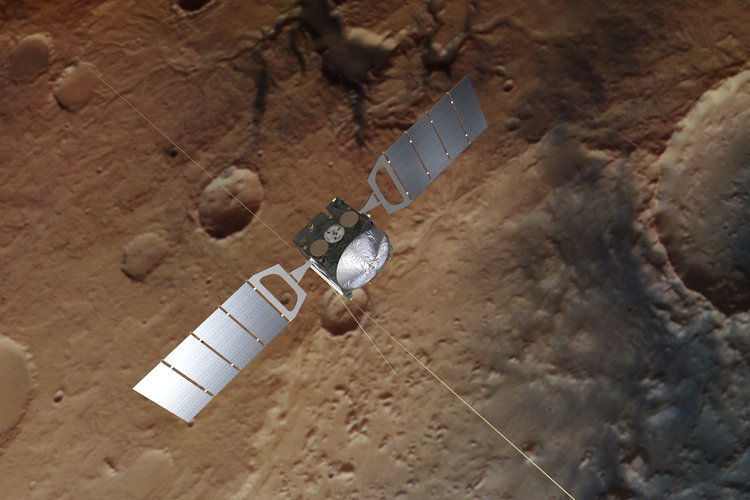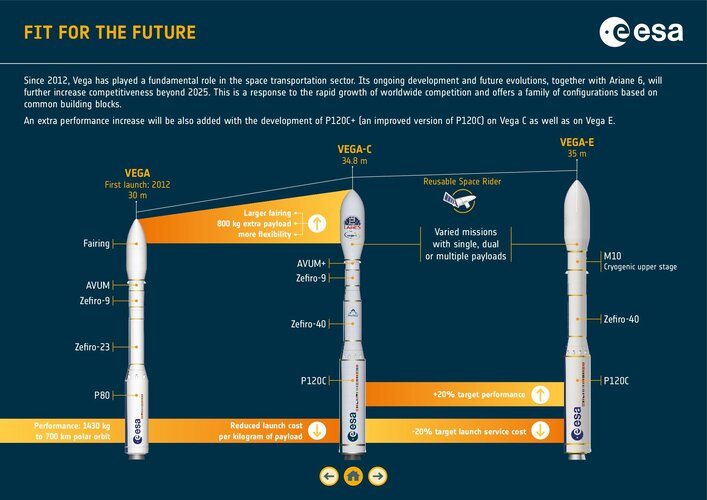
Copernical Team
South Korea launches first satellite with homegrown rocket

South Korea launched its first domestically built space rocket on Tuesday in the country's second attempt, months after its earlier liftoff failed to place a payload into orbit.
A successful launch would boost South Korea's growing space ambitions but also prove it has key technologies to build a space-based surveillance system and bigger missiles amid animosities with rival North Korea, some experts say.
The three-stage Nuri rocket carrying what officials call a functioning "performance verification" satellite blasted from South Korea's only space launch center on a small island off its southern coast at 4 p.m.
Officials are to announce the results of the launch later Tuesday.
In the first attempt last October, the rocket's dummy payload reached its desired altitude of 700 kilometers (435 miles) but didn't enter orbit because the engine of the rocket's third stage burned out earlier than planned.
If Tuesday's launch is successful, South Korea would become the world's 10th nation to place a satellite into space with its own technology.
South Korea, the world's 10th-largest economy, is a main supplier of semiconductors, automobiles and smartphones on world markets.
NASA Moon rocket test met 90% of objectives

NASA's fourth attempt to complete a critical test of its Moon rocket achieved around 90 percent of its goals, but there's still no firm date for the behemoth's first flight, officials said Tuesday.
Known as the "wet dress rehearsal" because it involves loading liquid propellant, it is the final item to cross off the checklist before the Artemis-1 mission slated for this summer: an uncrewed lunar flight that will eventually be followed by Moon boots on the ground, likely no sooner than 2026.
Teams at the Kennedy Space Center began their latest effort to complete the exercise on Saturday.
Their objectives were to load propellant into the rocket's tanks, conduct a launch countdown and simulate contingency scenarios, then drain the tanks.
NASA's InSight gets a few extra weeks of Mars science

The mission's team has chosen to operate its seismometer longer than previously planned, although the lander will run out of power sooner as a result.
As the power available to NASA's InSight Mars lander diminishes by the day, the spacecraft's team has revised the mission's timeline in order to maximize the science they can conduct.
Software upgrade for 19-year-old martian water-spotter

ESA boosts the satellite-enabled 5G media market

Film fans, gamers and future metaverse users will be able to experience high-quality videos, games and extended reality environments live and uninterrupted from anywhere, as satellites link up with terrestrial-based next-generation 5G and 6G connectivity.
Vega-C inaugural flight VV21 media kit

Download this media kit (English) to learn more about ESA’s new medium-lift launch system and its inaugural mission. Flight VV21 is scheduled for lift-off as soon as 7 July at 13:13 CEST, pending suitable conditions for launch.
Nanoparticles control flow of light like road signs direct traffic
 Physicists at The Australian National University (ANU) have developed tiny translucent slides capable of producing two very different images by manipulating the direction in which light travels through them.
As light passes through the slide, an image of Australia can be seen, but when you flip the slide and look again, an image of the Sydney Opera House is visible. The pair of images crea
Physicists at The Australian National University (ANU) have developed tiny translucent slides capable of producing two very different images by manipulating the direction in which light travels through them.
As light passes through the slide, an image of Australia can be seen, but when you flip the slide and look again, an image of the Sydney Opera House is visible. The pair of images crea Experiment results confirm anomaly suggesting new physics possibility
 New scientific results confirm an anomaly seen in previous experiments, which may point to an as-yet-unconfirmed new elementary particle, the sterile neutrino, or indicate the need for a new interpretation of an aspect of standard model physics, such as the neutrino cross section, first measured 60 years ago. Los Alamos National Laboratory is the lead American institution collaborating on the Ba
New scientific results confirm an anomaly seen in previous experiments, which may point to an as-yet-unconfirmed new elementary particle, the sterile neutrino, or indicate the need for a new interpretation of an aspect of standard model physics, such as the neutrino cross section, first measured 60 years ago. Los Alamos National Laboratory is the lead American institution collaborating on the Ba Subpopulation of Greenland polar bears found
 Greenland's fjords harbor a unique group of polar bears that rely on glacial ice, a NASA-funded study reports in Science.
Polar bears throughout the Arctic depend on sea ice as a platform for hunting seals. As human-caused climate change warms the planet and Arctic sea ice melts away, polar bears are scrambling to find ice to hunt on. But in Southeast Greenland, researchers found that bear
Greenland's fjords harbor a unique group of polar bears that rely on glacial ice, a NASA-funded study reports in Science.
Polar bears throughout the Arctic depend on sea ice as a platform for hunting seals. As human-caused climate change warms the planet and Arctic sea ice melts away, polar bears are scrambling to find ice to hunt on. But in Southeast Greenland, researchers found that bear The greening ashore
 A team led by evolutionary biologist Prof. Dr. Sven Gould of Heinrich Heine University Dusseldorf (HHU) has been studying the current state of research on the plant colonisation of land that occurred some 500 million years ago. The findings from this illustrated overview study published by Dr. Mona Schreiber as lead author have now appeared in the latest issue of the journal Trends in Plant Scie
A team led by evolutionary biologist Prof. Dr. Sven Gould of Heinrich Heine University Dusseldorf (HHU) has been studying the current state of research on the plant colonisation of land that occurred some 500 million years ago. The findings from this illustrated overview study published by Dr. Mona Schreiber as lead author have now appeared in the latest issue of the journal Trends in Plant Scie 































